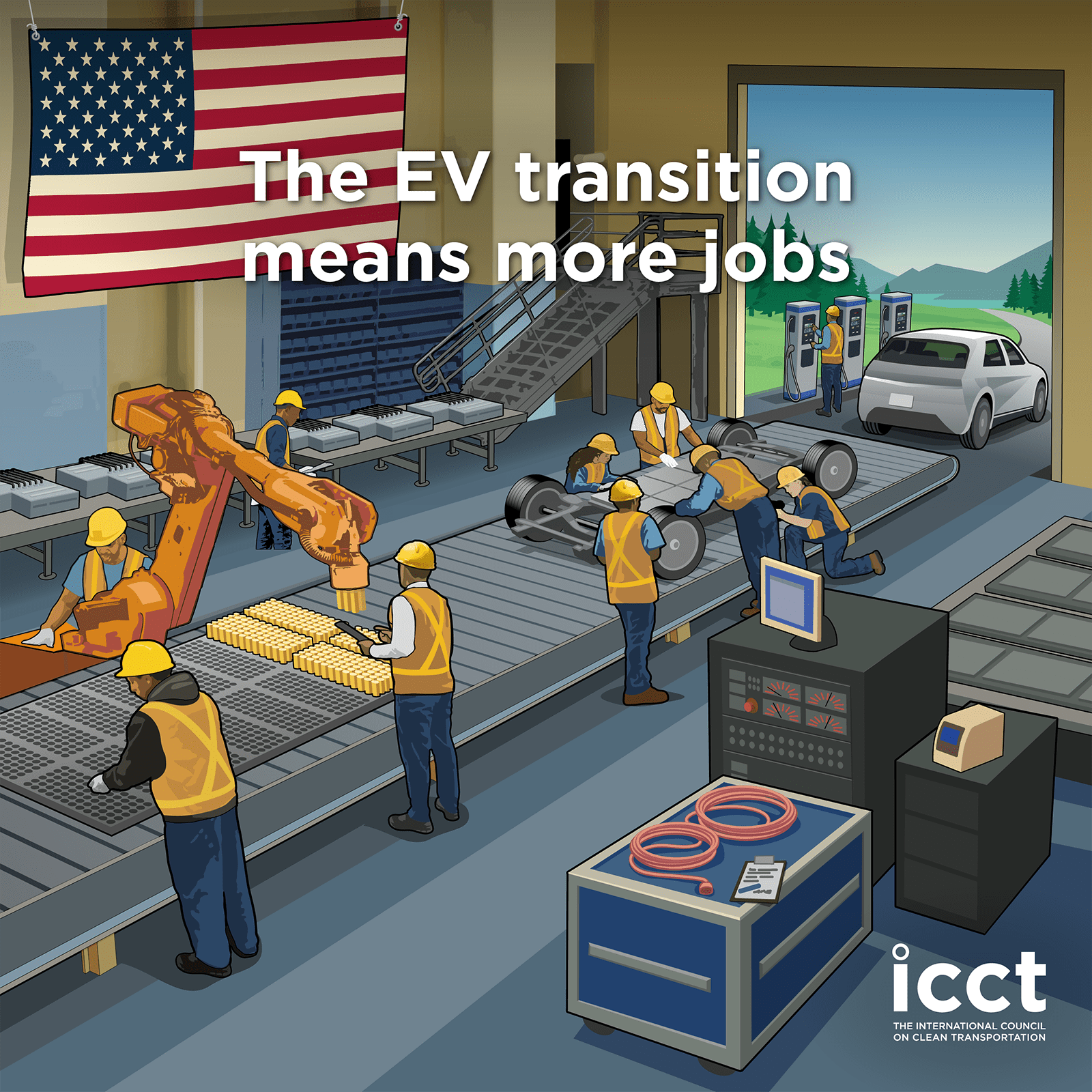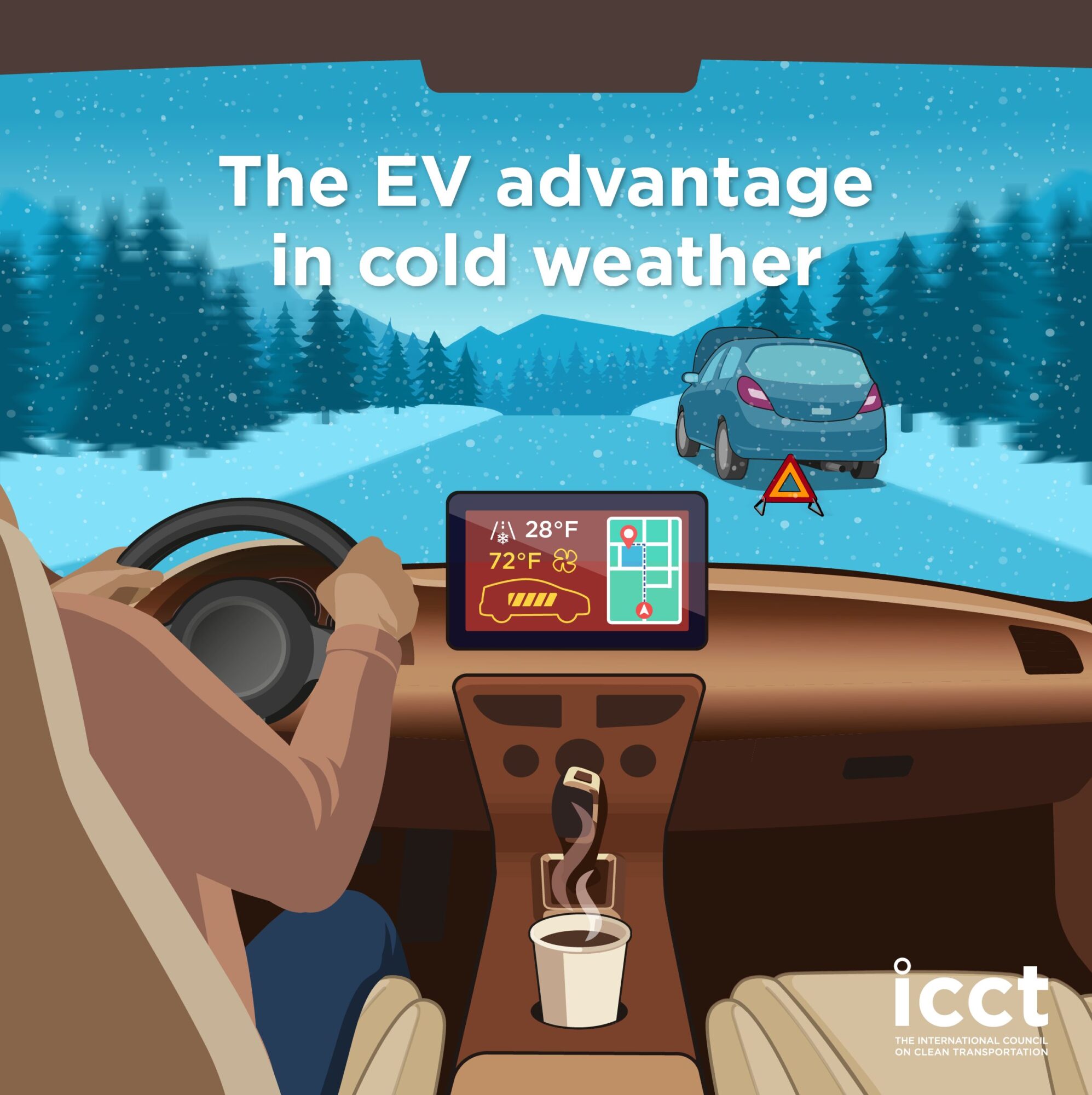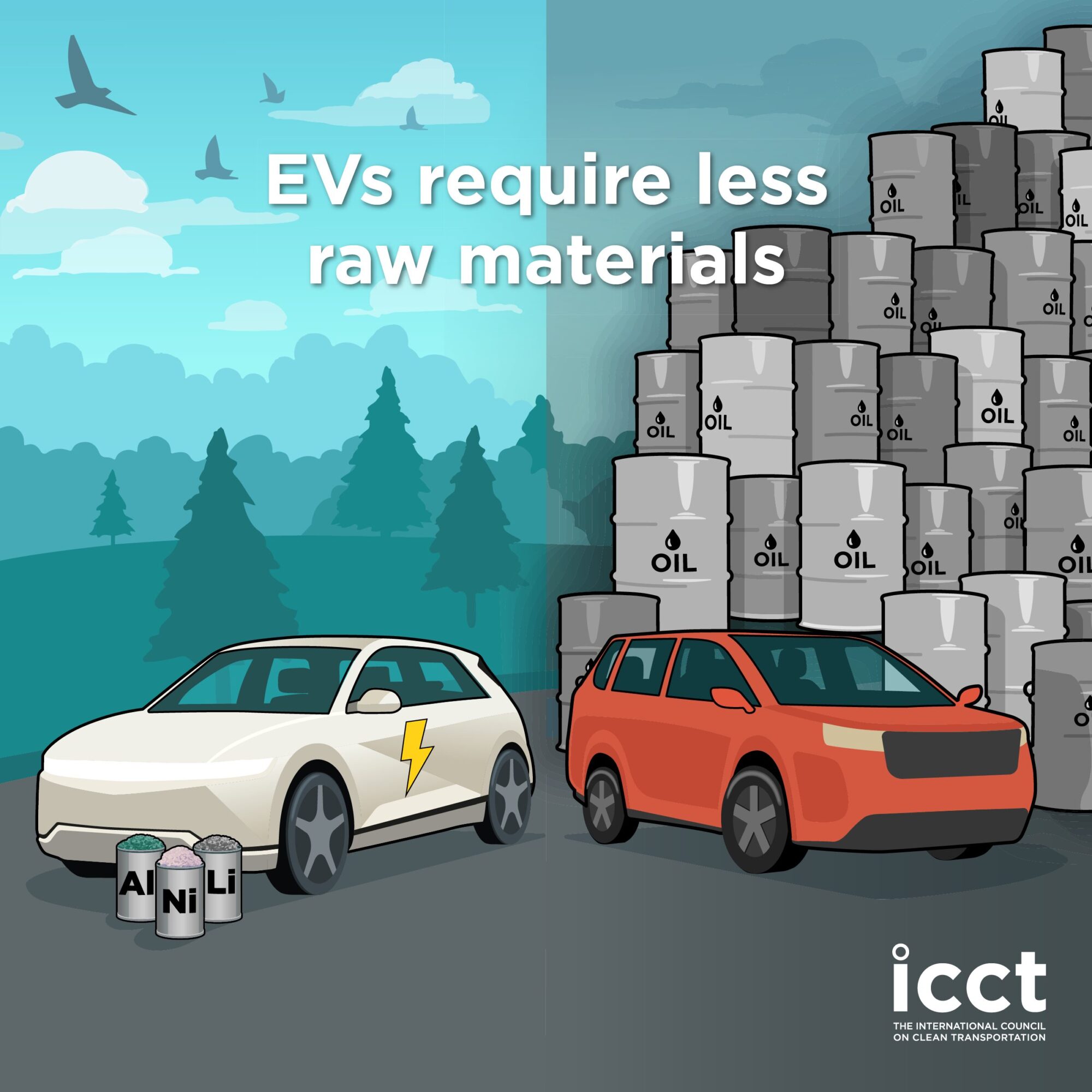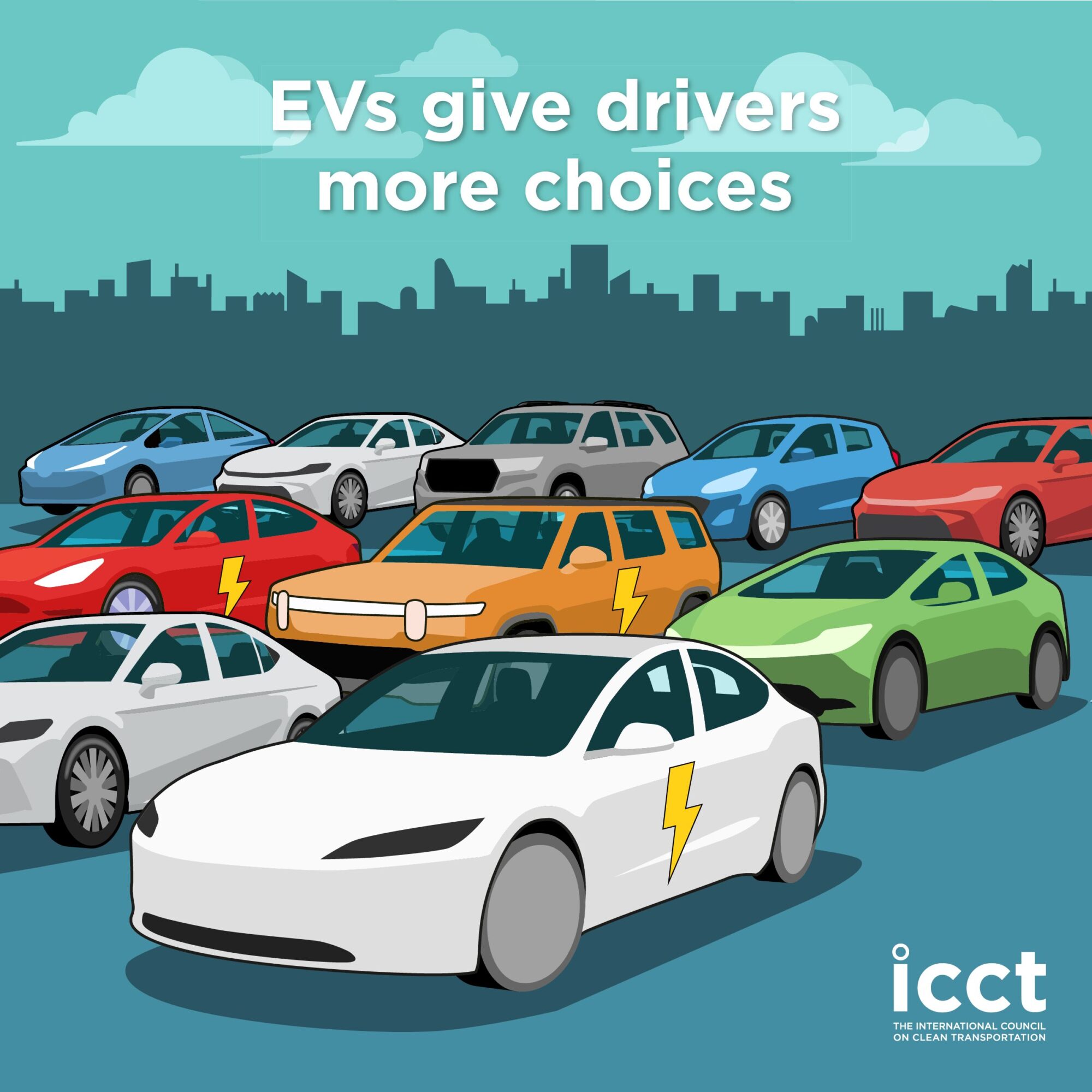CLEARING THE AIR
Understanding the EV Advantage
CLEARING THE AIR SERIES
Understanding the EV Advantage
Electric vehicles (EVs) are revolutionizing the transportation industry, offering a cleaner and more efficient alternative to traditional gasoline-powered cars. As technological advancements continue and charging infrastructure expands, fully electric vehicles are becoming increasingly accessible and practical for mainstream adoption.
The “Clearing the Air: Understanding the EV Advantage” series aims to provide clear, factual information to help regulators, academics, industry stakeholders, and the media better explain the myriad benefits of driving an EV. This resource explores how EVs can positively impact community health and the environment, while also delivering tangible advantages to drivers in terms of lower maintenance and fuel costs, increased efficiency, more vehicle options, and greater comfort.
This collection of information intends to promote meaningful discussions about the future of sustainable transportation by unpacking the unfamiliar and sometimes complex issues in the transition cleaner cars.
The electric vehicle transition can be a boom to domestic job creation
The Bottom Line
The transition to electric vehicles will result in a net increase in jobs across the automotive industry, from vehicle manufacturing to battery production, battery components, and charging infrastructure.
Where things get confusing
Some vehicle manufacturing jobs, particularly those focused on parts for internal combustion engine vehicles, will phase out. But a larger number of new positions will be created in the battery and charging infrastructure sectors. Thanks to policies including the Inflation Reduction Act and the Bipartisan Infrastructure Law, which incentivize domestic vehicle production and domestic supply chains, projections are for substantial job growth in the American automotive industry if companies continue to expand electric vehicle production facilities and establish new battery plants in the country. Since passing of the IRA, billions of dollars have been invested and hundreds of thousands of jobs have been announced.
Additional Context
The transition to electric vehicles will create an ecosystem of new, supporting industries and spur job growth in these industries. The already increased demand for batteries has led companies to announce hundreds of thousands of new jobs in the United States in battery manufacturing, cell component production, mineral sourcing, and battery recycling. Likewise, a growing share of electric vehicles in the on-road fleet will require growth in the charging infrastructure sector that will create jobs in the manufacturing of chargers, construction of new charging sites, and charging infrastructure service, repair, and maintenance.
Emerging data indicate a lower fire risk for EVs
The Bottom Line
Battery electric vehicles are less prone to fires than combustion engine vehicles. Furthermore, the frequency of EV fires are expected to go down and become easier to combat.
Where things get confusing
When electric vehicle fires do happen, they present different risks and require different approaches to safely extinguish. Firefighters and other first responders are not yet as familiar with these approaches as they are with approaches to extinguish combustion engine vehicle fires, though training programs exist to increase firefighter awareness of these approaches.
Additional Context
Although fire risk for EVs is probably lower than with combustion vehicles, many governments are working to mitigate electric vehicle fires by supporting research, collecting data, and implementing new regulations and firefighter response procedures. New federal initiatives and proposed standards are underway in the United States that would address and mitigate safety risks relating to battery and fire safety and equip first responders with the information they need to safely locate and extinguish fires and contain potential hazards. Technological advancements and shifts in battery chemistries toward lithium iron phosphate (LFP) can reduce the likelihood of electric vehicle fires due to higher thermal stability and resistance to thermal runaway. Next-generation chemistries including solid-state promise even greater reductions in fire risk.
Yes, electric vehicles perform well in cold weather
The Bottom Line
Electric vehicles can offer some advantages over their combustion engine counterparts in frigid conditions.
Where things get confusing
All vehicles – combustion and electric alike – experience reduced energy efficiency and refueling barriers in cold weather. In electric vehicles, cold temperatures slow the chemical reactions in electric vehicle batteries which cause it to operate less efficiently during charge and discharge cycles. In extreme cases, batteries won’t accept a charge immediately, but automakers have enabled a feature called preconditioning that allows the vehicle to warm the battery to a suitable temperature before charging, preserving battery health, increasing range, and reducing charge time. Because energy from the battery is needed to heat the cabin, cold weather conditions typically mean increased energy consumption and reduced range. However, this is true for both gasoline and electric vehicles.
Additional Context
In Norway, where average temperatures are consistently below freezing in the wintertime, battery electric vehicles represented over 90% of new sales in early 2024, indicating that temperature is not a barrier to widespread adoption. Electric vehicles have several benefits over combustion engine vehicles in cold weather. In extreme cases, combustion engine vehicles may have difficulty starting entirely, which is not an issue faced by electric vehicles. Electric vehicle drivers can also pre-heat their cabins while plugged in at the convenience from their home, at workplace, or at other public locations to minimize battery needs for heating. Automakers are also increasingly deploying heat pumps on electric vehicle models, which are an affordable and efficient technology used to warm the cabin with minimal impact on battery energy or driving range.
Electric vehicles will not overload the grid; they can benefit it
The Bottom Line
Many grid operators see electric vehicles as being beneficial for balancing demand, and electric vehicles are already reducing rates for utility customers in several markets.
Where things get confusing
Wider adoption of electric vehicles will increase electricity demand, but this new demand is estimated at well below that of historical average growth in electricity generation. In California, the state with the highest electric vehicle sales and sales shares, electric vehicles account for less than 1% of the total load during peak hours and are projected to account for less than 5% of that load by 2030. While grid capacity will need to expand to meet all future electricity demand needs, and not just from electric vehicles, efforts are underway to help meet this demand. Although the overall electricity supply and demand matters, when that supply and demand occurs matters even more. In theory, stress on local transformers and the grid overall could happen if every electric vehicle was charging at the same time during peak demand periods, though this does not occur in reality.
Additional Context
Many federal, state, utility, and power sector stakeholders are continuously analyzing future energy demand from all uses, not just from electric vehicles, and are actively working to meet projected demand through new policies, investments, and technologies. Reconductoring and grid-enhancing technologies offer cost-effective solutions in this effort. To balance electricity supply and demand, utility rate design and time-of-use pricing help to shift electric vehicle charging to optimal times that don’t strain the grid. As a result, electric vehicles are already reducing rates for utility customers in several markets, and this trend is expected to continue. Some electric vehicles come equipped with vehicle-to-home bidirectional charging that allows the vehicle to act as a backup power source for a house in the case of an outage. Multiple EVs working in unison in the same neighborhood could even mitigate blackouts for a localized part of the grid with vehicle-to-grid bidirectional charging.
There are plenty of minerals for EVs, and they have far less environmental impact than fossil fuels
There are more than enough minerals to manufacture electric vehicles and batteries
The Bottom Line
Known reserves of battery materials are more than sufficient to support a global transition to electric vehicles, and global raw material mining, refining, and battery production is proliferating.
Where things get confusing
The global battery supply chain is complex and multifaceted. Most markets are not self-sufficient in terms of raw material reserves, or mining, refining, and battery production capacity. Reliance on overseas supply, especially when options or alternatives are limited, indicates a clear opportunity to expand and diversify supply chains, including in the United States. For batteries, global production capacity was more than double global battery demand in 2023. As global battery production capacity continues to expand, battery material mining and refining capacity will need to continue to grow in unison. To keep pace with battery and electric vehicle demand, many hundreds of new mining and refining projects are underway, including in the United States and its trade partners. Although the global supply of battery raw materials is expected to keep pace with demand as industry proliferates global reserves are more than sufficient to support a global electric vehicle transition, their geographic distribution may pose challenges.
Additional Context
Recycling end-of-life batteries can dramatically reduce the amount of material extraction needed and the associated energy consumption and emissions. Industry announcements indicate that recycling capacity will far outpace the volume of available end-of-life batteries. In parallel, shifts in battery chemistries and technological improvements in energy density hold promise to further reduce raw material demand. The Inflation Reduction Act incentivizes raw material mining, refining, recycling, and battery production within the United States and its trade partners by investing in domestic facilities and by providing consumer tax credits based on where battery components and critical minerals are sourced. This directly incentivizes raw material mining, refining, recycling, and battery production in markets that tend to have the highest environmental, social, labor, and governance standards in place.
Electric vehicles have expanded consumer choice
The Bottom Line
More electric vehicle models are available across more vehicle segments and at more price points than ever before, and the number of gasoline models available hasn’t decreased—meaning there are more models on the market than ever before!
Where things get confusing
New tailpipe pollution standards in the United States will greatly reduce emissions from new light-duty cars and trucks and could result in a 53% share for plug-in electric vehicles by 2030. The standards are technology neutral – there’s no mandate for a specific power train or fuel type. Automakers can comply however they choose. Automakers don’t have to sell 53% electric vehicles in 2030, that’s just what the data and analysis found would be the most cost-effective compliance path.
Additional Context
Annual electric vehicle sales in the United States have increased from about 18,000 in 2010 to over 1.4 million in 2023, and the number of electric vehicle models have increased from about 5 to 100. Over that same timeframe, the number of gasoline models available for sale has remained steady at over 1,100 and the consumer options for advanced gasoline and hybrid models has greatly expanded. Declining electric vehicle and battery costs mean that mean that it makes business sense for automakers to offer more models and for more consumers to buy them. Most automakers are committed to an all-electric future, have announced many dozens of new models, and are collectively investing over $1 trillion in electric vehicles and batteries.






